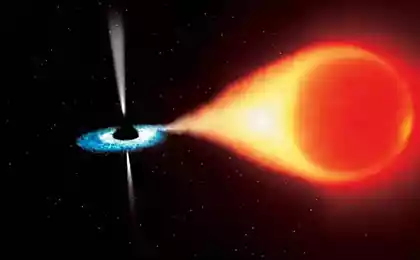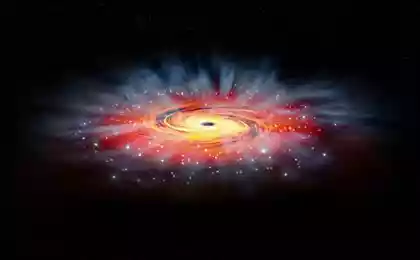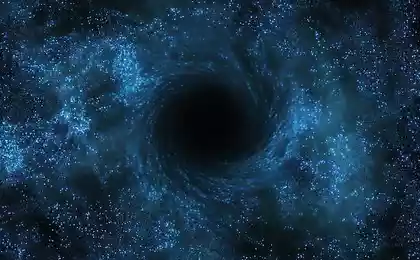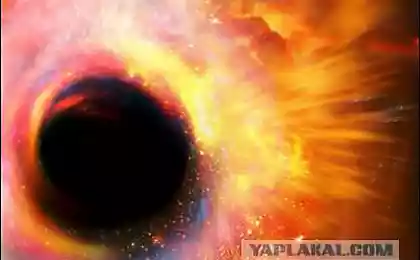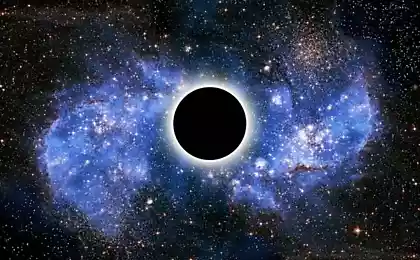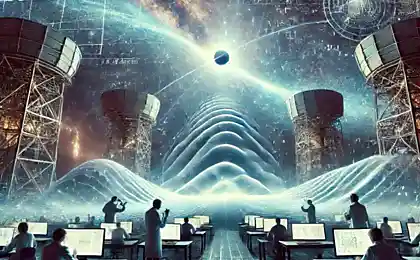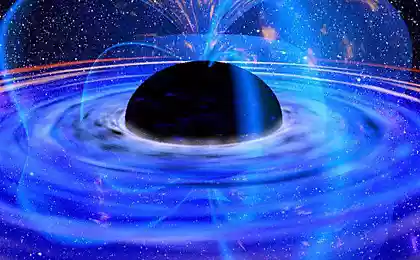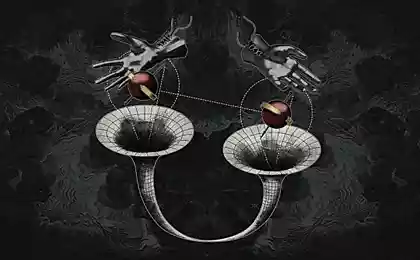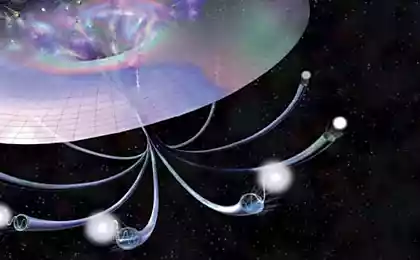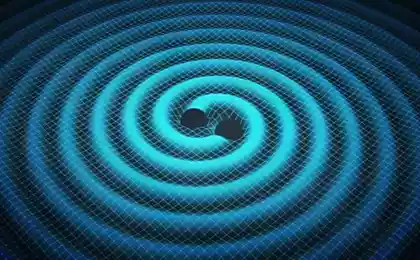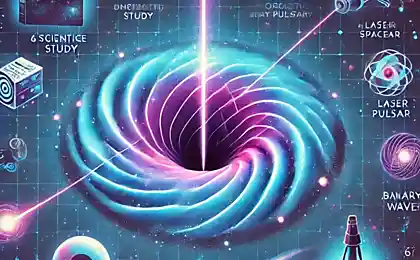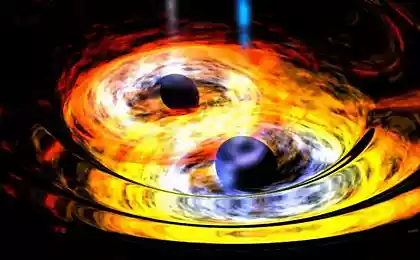202
Black Holes: What Have We Learned in the Last 5 Years?
Gravitational waves, a photo of the event horizon and a real revolution in astrophysics – lift the veil over the most mysterious objects in the Universe.

Why do we care so much about black holes?
Black holes, like funnels in space, from time immemorial excited the imagination of scientists and space lovers. They seem to go beyond our intuition: how can a colossal mass be “folded” into a point from which not even light escapes? The last few years in astrophysics have brought incredible discoveries. radicalized Our understanding of these objects. If earlier many hypotheses were based mainly on theory, now we have direct evidence and even unique ones. visualization.
To explain why these results are so important, let’s draw an analogy: imagine that you’ve heard of mysterious sea monsters for centuries, but only seen blurry drawings in ancient maps. And then suddenly someone brings you quality. photograph one of these creatures. Such an event not only gives food for curiosity, but also breaks old ideas about reality. This happened when scientists first captured the black hole’s “shadow.” But everything in order.
Gravitational Waves: Music of Space
One of the major breakthroughs in our understanding of black holes is gravitational-wave observation. The idea that massive objects create distortions in the fabric of space-time was described in the writings of Albert Einstein. But only in recent years have we received direct confirmation of the existence of such waves.
Analogy: imagine a rubber carpet that has a massive ball on it -- it bends. If the balls collide or move, "waves" are born in the carpet. Similarly, two merging black holes create oscillations that diverge across space-time at the speed of light. These “sounds” of the universe we learned to “hear” with the help of giant detectors LIGO and Virgo. When a burst of gravitational waves is recorded, scientists can determine the mass, distance, and other parameters of the merging objects.
First photo of the event horizon
Of course, one of the biggest events in recent years has been First-ever photo of a black holeThe Event Horizon Telescope (EHT) project. Seeing an object that literally does not emit light seems paradoxical, but the scientists went to the trick: they recorded the electromagnetic radiation of hot gas orbiting the black hole, and then calculated the force of the shadow – the region into which all light disappears.
To understand the scale, imagine what you are trying to photograph. orange on the moon The distances are so huge that individual telescopes cannot cope. So scientists have combined several observatories around the world to create an Earth-sized telescope. The result was amazing: we got a real image that shows the characteristic “ring” around the dark central region.

The Astrophysics Revolution: New Horizons
All this creates the real thing. revolution In space science, we can now study not only the black holes themselves, but also their surroundings. It turned out that many galaxies have supermassive black holes at their centers, which play a key role in the formation of a stellar “home”.
What is even more surprising: some scientists suggest that black holes can be the source of powerful relativistic jets that affect the distribution of matter in galaxies. In fact, without them, our universe would look different: perhaps stars would form less frequently or elsewhere. The question of how remains one of the hottest in modern astrophysics.
Other areas of research include:
Metaphorical explanation: "a black hole is like a cosmic gate"
To simplify the idea of black holes even more, we can use a metaphor: vortexIn the center of which lies the “failure”. Everything that crosses the boundary of the funnel (event horizon) falls into the zone from which there is no return. It’s like the water around a drain in a bathtub: as long as it’s nearby, you can push it away, but if it’s too close, there’s no going back.

Conclusion: the road to new discoveries
Black holes are no longer pure abstractions, and each new discovery forces us to push the boundaries of the known world. From gravitational waves to the first photo of the event horizon, our picture of the cosmos has been complemented by important details that confirm Einstein’s theory of relativity and move astrophysics forward. In the coming years, scientists plan to measure the properties of black holes even more accurately, look for signatures of exotic processes, and perhaps hold the key to understanding how the fabric of reality works.
For humanity, this means that we become closer To solve one of the most intriguing mysteries of the universe, and at the same time open the way to a new level of technology and fundamental knowledge. After all, as the history of science shows, by studying something “far and incomprehensible”, we simultaneously find solutions for the future of science. everyday changing life on Earth for the better.

Why do we care so much about black holes?
Black holes, like funnels in space, from time immemorial excited the imagination of scientists and space lovers. They seem to go beyond our intuition: how can a colossal mass be “folded” into a point from which not even light escapes? The last few years in astrophysics have brought incredible discoveries. radicalized Our understanding of these objects. If earlier many hypotheses were based mainly on theory, now we have direct evidence and even unique ones. visualization.
To explain why these results are so important, let’s draw an analogy: imagine that you’ve heard of mysterious sea monsters for centuries, but only seen blurry drawings in ancient maps. And then suddenly someone brings you quality. photograph one of these creatures. Such an event not only gives food for curiosity, but also breaks old ideas about reality. This happened when scientists first captured the black hole’s “shadow.” But everything in order.
Gravitational Waves: Music of Space
One of the major breakthroughs in our understanding of black holes is gravitational-wave observation. The idea that massive objects create distortions in the fabric of space-time was described in the writings of Albert Einstein. But only in recent years have we received direct confirmation of the existence of such waves.
Analogy: imagine a rubber carpet that has a massive ball on it -- it bends. If the balls collide or move, "waves" are born in the carpet. Similarly, two merging black holes create oscillations that diverge across space-time at the speed of light. These “sounds” of the universe we learned to “hear” with the help of giant detectors LIGO and Virgo. When a burst of gravitational waves is recorded, scientists can determine the mass, distance, and other parameters of the merging objects.
- What did we learn? The merger of black holes occurs more often than expected, and the objects themselves can have a variety of masses beyond the usual limits.
- Why does it matter? These data help to clarify models of the evolution of stars and galaxies, and also confirm the validity of general relativity.
First photo of the event horizon
Of course, one of the biggest events in recent years has been First-ever photo of a black holeThe Event Horizon Telescope (EHT) project. Seeing an object that literally does not emit light seems paradoxical, but the scientists went to the trick: they recorded the electromagnetic radiation of hot gas orbiting the black hole, and then calculated the force of the shadow – the region into which all light disappears.
To understand the scale, imagine what you are trying to photograph. orange on the moon The distances are so huge that individual telescopes cannot cope. So scientists have combined several observatories around the world to create an Earth-sized telescope. The result was amazing: we got a real image that shows the characteristic “ring” around the dark central region.

- Who were you looking at? The object of research was a black hole in the center of the galaxy Messier 87 (M87), located at a distance of tens of millions of light years from us.
- What does that do? Thanks to such observations, we can directly test theoretical predictions that were previously available only on paper.
The Astrophysics Revolution: New Horizons
All this creates the real thing. revolution In space science, we can now study not only the black holes themselves, but also their surroundings. It turned out that many galaxies have supermassive black holes at their centers, which play a key role in the formation of a stellar “home”.
What is even more surprising: some scientists suggest that black holes can be the source of powerful relativistic jets that affect the distribution of matter in galaxies. In fact, without them, our universe would look different: perhaps stars would form less frequently or elsewhere. The question of how remains one of the hottest in modern astrophysics.
Other areas of research include:
- Measurement of rotation (back) black holes affecting the formation of accretion disks;
- Interaction with dark matterCan it accumulate and anigilate near the event horizon?
- Search for Quantum EffectsThe theory of quantum gravity could reveal what's going on beyond the horizon.
Metaphorical explanation: "a black hole is like a cosmic gate"
To simplify the idea of black holes even more, we can use a metaphor: vortexIn the center of which lies the “failure”. Everything that crosses the boundary of the funnel (event horizon) falls into the zone from which there is no return. It’s like the water around a drain in a bathtub: as long as it’s nearby, you can push it away, but if it’s too close, there’s no going back.

Conclusion: the road to new discoveries
Black holes are no longer pure abstractions, and each new discovery forces us to push the boundaries of the known world. From gravitational waves to the first photo of the event horizon, our picture of the cosmos has been complemented by important details that confirm Einstein’s theory of relativity and move astrophysics forward. In the coming years, scientists plan to measure the properties of black holes even more accurately, look for signatures of exotic processes, and perhaps hold the key to understanding how the fabric of reality works.
For humanity, this means that we become closer To solve one of the most intriguing mysteries of the universe, and at the same time open the way to a new level of technology and fundamental knowledge. After all, as the history of science shows, by studying something “far and incomprehensible”, we simultaneously find solutions for the future of science. everyday changing life on Earth for the better.
Learn to pamper yourself: the secret of inner happiness and harmony
The art of silence: how silence affects the psyche and creativity
